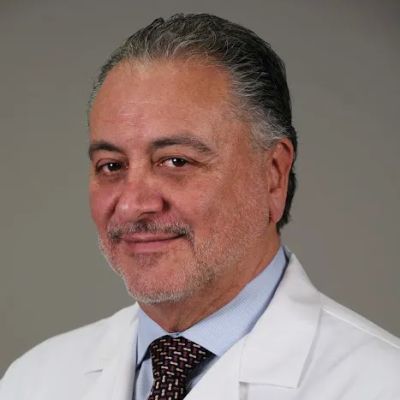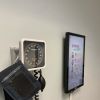Understanding the Impact of a Second Heart Attack on Recovery
Heart attacks are a leading cause of death and disability worldwide, and for those who have already suffered one, the fear of a second heart attack is a constant concern. A second heart attack can have a profound impact on your recovery journey, making it essential to understand how it differs from the first, what challenges it presents, and what steps can be taken to manage and improve recovery outcomes. In this article, I’ll explore the effects of a second heart attack on recovery, provide insights into the risks, and offer advice on how to manage your health effectively after such a critical event.

1. How Does a Second Heart Attack Differ from the First?
Experiencing a second heart attack is not the same as the first. The initial heart attack often serves as a wake-up call, prompting lifestyle changes and medications to manage heart health. However, a second heart attack indicates that the underlying cardiovascular problems have not been fully addressed or have worsened over time. The severity of the second heart attack can be more significant due to the previous damage to the heart muscle, which makes the recovery process more complex and prolonged.
Some key differences between the first and second heart attacks include:
- Increased Damage: A second heart attack may cause more extensive damage to the heart muscle, leading to a greater risk of heart failure or other complications.
- Higher Risk of Complications: People who have already had a heart attack are at a higher risk of developing arrhythmias, stroke, and other life-threatening conditions after a second event.
- Worsened Prognosis: Studies have shown that individuals who experience a second heart attack have a poorer long-term prognosis and a higher likelihood of mortality.
Understanding these differences is critical for managing recovery and reducing the risk of further heart issues.
Atlanta Heart Specialists
atlanta heart specialists
4375 Johns Creek Pkwy #350, Suwanee, GA 30024, USA

2. The Emotional and Psychological Toll of a Second Heart Attack
Beyond the physical impact, a second heart attack can also take a significant emotional and psychological toll. The fear of death, anxiety about future health, and depression related to the experience can complicate the recovery process. It’s not uncommon for patients who experience a second heart attack to struggle with stress, anxiety, and a reduced sense of well-being, which can interfere with physical recovery.
Many people find themselves feeling more vulnerable after a second heart attack, as they now face the reality that their heart health is fragile and that their lifestyle choices play a direct role in their survival. This mental burden can affect how well a person follows through with prescribed recovery plans, such as attending cardiac rehabilitation or sticking to a healthier diet and exercise routine.
To improve recovery outcomes, it's essential to address both the physical and emotional aspects of recovery. Seeking psychological support, joining a support group, or working with a counselor specializing in chronic health conditions can help alleviate stress and promote a more positive outlook on recovery.
3. Lifestyle Changes and Their Role in Recovery
Following a second heart attack, lifestyle changes become even more crucial. The heart has already been weakened by the first event, and a second attack may further compromise its ability to function. To optimize recovery and reduce the risk of future heart attacks, patients must commit to making healthier lifestyle choices.
Key lifestyle changes that can help with recovery include:
- Dietary Modifications: A heart-healthy diet is essential for reducing cholesterol, blood pressure, and overall cardiovascular risk. Focus on eating nutrient-dense foods, such as fruits, vegetables, whole grains, and lean proteins while limiting processed foods and saturated fats.
- Regular Exercise: Cardiovascular exercises, such as walking, swimming, or cycling, can help improve heart function and promote overall health. It's important to consult with a doctor before beginning any exercise program to ensure safety.
- Stress Management: Chronic stress can contribute to heart disease and complicate recovery. Practicing stress-reduction techniques such as meditation, yoga, or deep breathing exercises can help improve both mental and physical health.
- Smoking Cessation: Smoking is one of the most significant risk factors for heart disease, and quitting smoking after a second heart attack is vital for improving recovery prospects.
Committing to these changes can significantly improve your heart health and lower the risk of further complications.
4. The Role of Medications in Second Heart Attack Recovery
Medications play a pivotal role in recovery after a second heart attack. The goal of medication is to reduce the workload on the heart, manage cholesterol levels, control blood pressure, and prevent the formation of blood clots. Some common medications prescribed after a second heart attack include:
- Antiplatelet Medications: Drugs such as aspirin or clopidogrel help prevent blood clots from forming in the arteries, reducing the risk of another heart attack or stroke.
- Beta-Blockers: These medications help reduce heart rate and blood pressure, allowing the heart to pump more efficiently and reduce the risk of arrhythmias.
- Statins: Statins help lower cholesterol levels, which can reduce the buildup of plaque in the arteries and prevent further damage to the heart.
- ACE Inhibitors: These medications help relax blood vessels and lower blood pressure, which can reduce the strain on the heart and improve recovery.
It’s crucial to follow your doctor’s instructions regarding these medications and attend regular checkups to monitor progress and adjust dosages as needed.
5. The Importance of Cardiac Rehabilitation After a Second Heart Attack
Cardiac rehabilitation is an essential component of recovery after a second heart attack. These supervised programs provide education on heart health, physical exercise tailored to your needs, and emotional support to help you adjust to life after a heart attack. Participating in a cardiac rehabilitation program can lower the risk of future heart problems and help patients regain strength and confidence.
Typically, cardiac rehabilitation programs involve:
- Exercise Training: Gradually increasing physical activity to strengthen the heart and improve overall fitness.
- Education: Learning about heart disease, medication management, nutrition, and stress management techniques.
- Counseling: Providing emotional and psychological support to help patients cope with the fear, anxiety, and depression often associated with heart disease.
Cardiac rehabilitation not only helps improve heart health but also enhances quality of life, giving patients the tools they need to prevent future heart attacks.
6. Monitoring Long-Term Health After a Second Heart Attack
Even after completing the initial recovery phase, long-term monitoring is necessary to ensure continued heart health. Regular visits to your healthcare provider are crucial for tracking progress, adjusting medications, and addressing any potential issues before they become severe. Additionally, periodic tests like stress tests, echocardiograms, and blood tests are essential for assessing heart function and detecting any signs of problems early.
Maintaining a healthy lifestyle and staying committed to your medication regimen are key factors in sustaining recovery. It’s also important to stay informed about the latest heart health research and follow any new recommendations your healthcare provider offers.





















Deborah Heart and Lung Center
deborah heart and lung center
200 Trenton Rd, Browns Mills, NJ 08015, USA